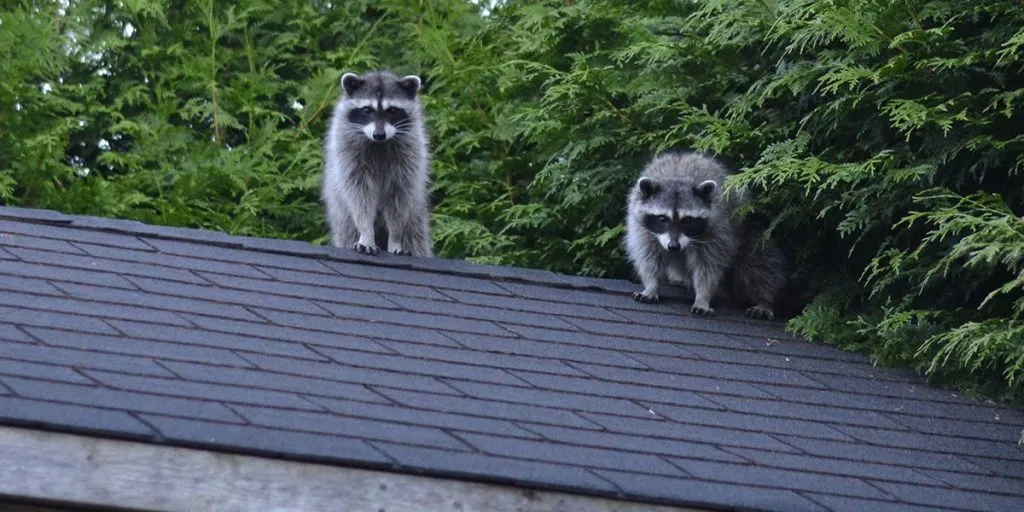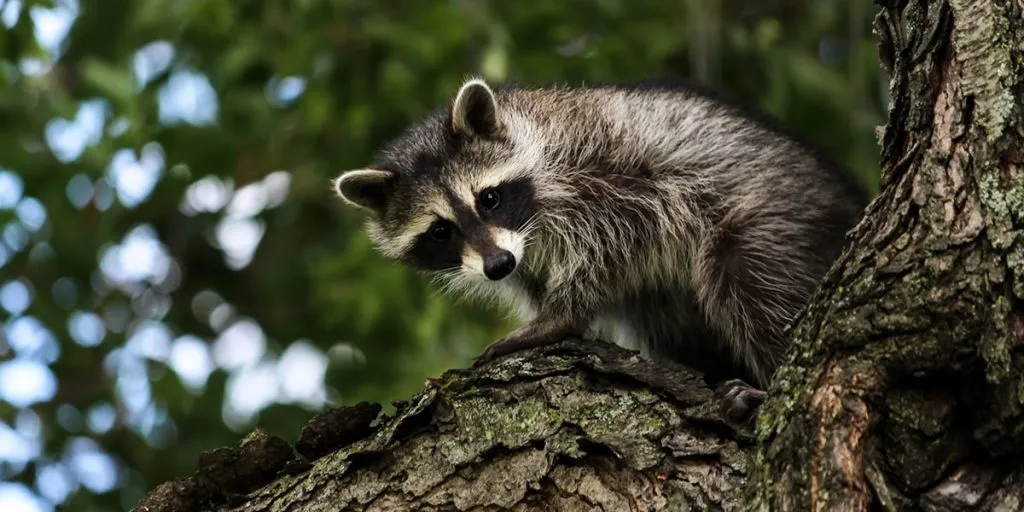Raccoons are often found in attics, but how do they get up there? It’s not difficult for a raccoon to access a roof, especially if a tree is nearby. The animals have a sneaky way to enter your house, and it doesn’t even need to have a hole in it.
In general, a raccoon will gain access to an attic by making a 3 to 4 inch hole where it squeezes its body through. Where multiple building materials join, raccoons remove wood, nails, insulation, and other materials to access an attic.
By tearing away building materials on the roof of a house, a raccoon can access the warmer parts of a house. The animals will usually access buildings by demolishing vents or roofing to get inside.
The YouTube video below explains exactly how they do it (video courtesy of the Humane Society of the United States):
Raccoons Can Get Into Your House
Your home does not need to have a hole in the wall or roof for a raccoon to get inside. In fact, the raccoon is happy to take care of that job itself. They will effortlessly find the weaker parts of the structure in order to gain access.
The damage created by these animals can often be expensive to repair. They won’t shy away from removing screws, nails, tiles, or pipes. If there is a way for them to get in, they will absolutely find it.
A raccoon is able to chew or claw its way through materials such as wood, plastic, aluminum, and insulation. If you’re dealing with raccoons in your attic or walls, it is important to systematically inspect these materials. If possible, strengthen weak joints and place raccoon-proof repairs to already damaged locations.
The Sneaky Method: Sheer Destruction
It might surprise a lot of homeowners that their homes are not safe from raccoons. The animals have the ability to destroy and enter any building they can find weak spots in. Raccoons are determined to find a warm den for themselves, which means that roofs and attics are especially at risk.
Raccoons might not hibernate in wintertime, but they will seek out warmer locations to sleep through the colder months.
Since most raccoons have more than one nest at any given time, they are always exploring and finding new places to sleep in. The opportunistic animals will not shy away from destroying houses to gain access to them. Their destructive nature makes them especially annoying pests to deal with.
Stop Raccoons From Damaging Your House
To prevent raccoons from damaging your property and stay one step ahead of these animals, the following practical tips might be helpful to you:
- Block access with protection: Reinforce high-risk access areas in your house (particularly the joints of the roof where two building materials meet, new repairs near your attic, or possible openings under the house).
- Deter access with fencing: Fence off any trees located directly near your house or shed, seal off chimneys, and protect weak spots under the deck in your backyard. Add extra thick plywood (with metal reinforcement if possible) to weak spots in the insulation of your attic.
- Remove possible food sources: No available food means no raccoons, so make sure to lock garbage cans, fence off vegetable gardens, pick up any edible nuts or fruits, and only feed your pets indoors. Cats and raccoons can pick fights over food, which could result in a raccoon killing your cat.
- Place raccoon traps: Observe common paths raccoons take and place humane traps to capture and relocate the animals to another region. Make sure to check traps every few hours to reduce the suffering of any caught animals.
Obviously, a tailor-made solution would always work best. Based on your personal situation and the location of the raccoons in or around your property, the strategy can change. The professional help of a specialized raccoon removal company can help you succeed better.
How To Get Raccoons Out Of An Attic
Earlier, we explored the practical side of removing raccoons from an attic. This article provides a comprehensive overview of how to permanently get rid of attic raccoons, using a simple 5-step method. Please refer to it for more details.
In short, to get a raccoon family removed from an attic space, the following procedure should be followed:
- Locate the nest: Locate the source of the sound to determine how many animals are holing up in your attic, as well as what part of the room. This will give you information on the location you should put your raccoon removal efforts into.
- Observe the point of entry: Raccoons leave their nest when it gets dark, so make sure you know where they enter the attic from the roof. This can easily be done by inspecting the roof and looking for any holes larger than 3 inches. It might be indicated by fur, feces, or broken housing materials.
- Empty and clean the space: Some protection might be needed when cleaning out your attic space, as it will probably be scattered with raccoon poop. This is dangerous because it contains diseases such as roundworm or rabies. Animals that feel cornered might feel the need to attack humans with their sharp claws.
- Set raccoon traps: Seal off any entry points and place humane raccoon traps. Place some bait such as meat or nuts. Make sure to check traps that you set very often, as leaving the animal inside the trap is inhumane. Removing them quickly is key,
- Call professional removal services: The help of professional removal services or the advice of wildlife organizations might be needed for proper relocation of the animals. If you wish to avoid having similar problems in the future, getting good advice is essential.
Now you know that raccoons will go to great lengths to enter a home, especially in the winter time, it’s important to ‘fight back’. Discourage the animals from entering your house by making it as difficult as possible for them.
This means removing any type of food source, blocking off access, as well as deterring the raccoons with various methods. Remember that raccoons also live in nests up in the trees and are avid climbers. This is why the trees around your house help them access your roof the most, and perhaps it’s good to do something about that!
Featured image adapted from: Germán Poo-Caamaño via Flickr



